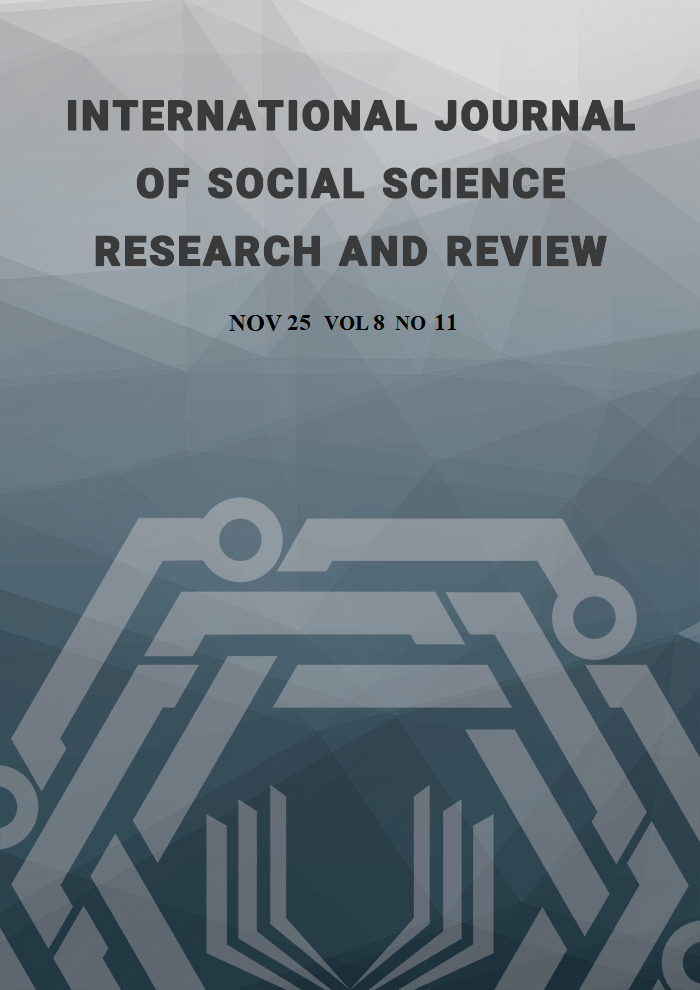Perceptions of Gender-Based Violence (GBV) Among Forcibly Displaced Populations in Chad: An Analysis of Women's Specific Vulnerabilities
Abstract
Chad and its neighboring countries are facing a complex humanitarian crisis characterized by massive population displacement due to armed conflicts, intercommunal violence, and climate shocks. In 2023, Chad hosted over one million forcibly displaced persons, including 712,000 refugees and 400,000 internally displaced persons (IDPs). These populations, particularly women and girls, experience GBV at a significantly high rate of approximately 40% affected. Given the fragility of protection mechanisms and cultural barriers, this study addresses the urgent need to understand GBV perceptions in order to design responses tailored to local realities. The research analyzes sociodemographic and geospatial factors that may influence the GBV acceptance among forcibly displaced populations in Chad. By examining the role of migratory status, gender, access to services, and geographic location, the study seeks to capture how GBV is perceived to inform decision-making in future humanitarian interventions. The methodological approach employs a mixed-methods design (quantitative and qualitative). Quantitative analysis is based on a dataset of 5,409 individuals from the 2024 RMS Chad survey. Chi-square tests were applied to assess associations between variables. The qualitative component draws on individual and group interviews conducted with key informants during the same survey. Thematic analysis of interviews helped uncover the underlying cultural and social dimensions. Findings reveal that acceptance of GBV among forcibly displaced persons in Chad is shaped by complex dynamics where migratory status, local integration, and social norms interact. The study also highlights the need for differentiated interventions combining strengthened protection for vulnerable groups with transformation of patriarchal norms, beyond simple material approaches. These results call for rethinking humanitarian strategies in displacement contexts.
References
Bah, M. (2018). Étude qualitative sur les VBG dans les contextes de déplacement au Sahel. ACRA. 78 p.
CICR (2004). Répondre aux besoins des affectées par les conflits armés: un guide pratique du CICR, 217 p.
Cluster Protection Tchad (2023). Analyse de protection: l’impact de la crise soudanaise. 45 p.
Comité Permanent Inter-organisation de l’OIM (2015). Directives relatives à la violence basée sur le genre (VBG), Genève.
Connell, R. W. (1987). Gender and Power: Society, the Person and Sexual Politics. Stanford University Press. 334 p.
Garcia-Moreno, C., Jansen, H. A. F. M., Ellsberg, M., Heise, L. & Watts, C. H. (2006). « Prevalence of intimate partner violence: findings from the WHO multi-country study on women’s health and domestic violence ». The Lancet, 368(9543) 1260-1269 pp.
Heise, L. L. (1998). « Violence against women: An integrated », Ecological framework. Violence Against Women 4(3), 262-290 pp.
Jansen, N. (2022). « Patriarchal Norms and Displacement: A comparative Analysis ». Journal of Refugee Studies, 35(1), 105-125 PP.
Ministère de la Femme et de la Petite Enfance du Tchad (2022). Stratégie Nationale de Lutte contre les Violences Basées sur le Genre 2022-2026, 60 p.
OIM. (2018). Cadre Institutionnel de lutte contre la violence basée sur le genre en situation de crise, Genève, 40 p.
OIM (2023). Rapport sur la traite des personnes dans les crises de déplacement: focus sur le Bassin du Lac Tchad. 65 p.
OMS (1997). « La violence contre les femmes », Santé de la famille et Santé reproductive, Genève.
OMS (2002). Rapport mondial sur la violence et la santé, Genève.
RMS Tchad (2024). Enquête sur la sécurité et les VBG dans les populations déplacées de force au Tchad. 120 p.
UNHCR (2020). Global Trends: Forced Displacement in 2020. 84 p.
UNHCR (2023). Tchad: Aperçu des besoins humanitaires (HNO). 32 p.
Josse, E. (2006). « Violences sexuelles et conflits armées en Afriques », http: //www.reslience.netfirms.com
Plan International (2025): Causes et conséquences des violences sexistes et sexuelles, http://www.plan-international.fr.

This work is licensed under a Creative Commons Attribution-NonCommercial-NoDerivatives 4.0 International License.
Copyright for this article is retained by the author(s), with first publication rights granted to the journal. This is an open-access article distributed under the terms and conditions of the Creative Commons Attribution license (https://creativecommons.org/licenses/by-nc-nd/4.0/).





